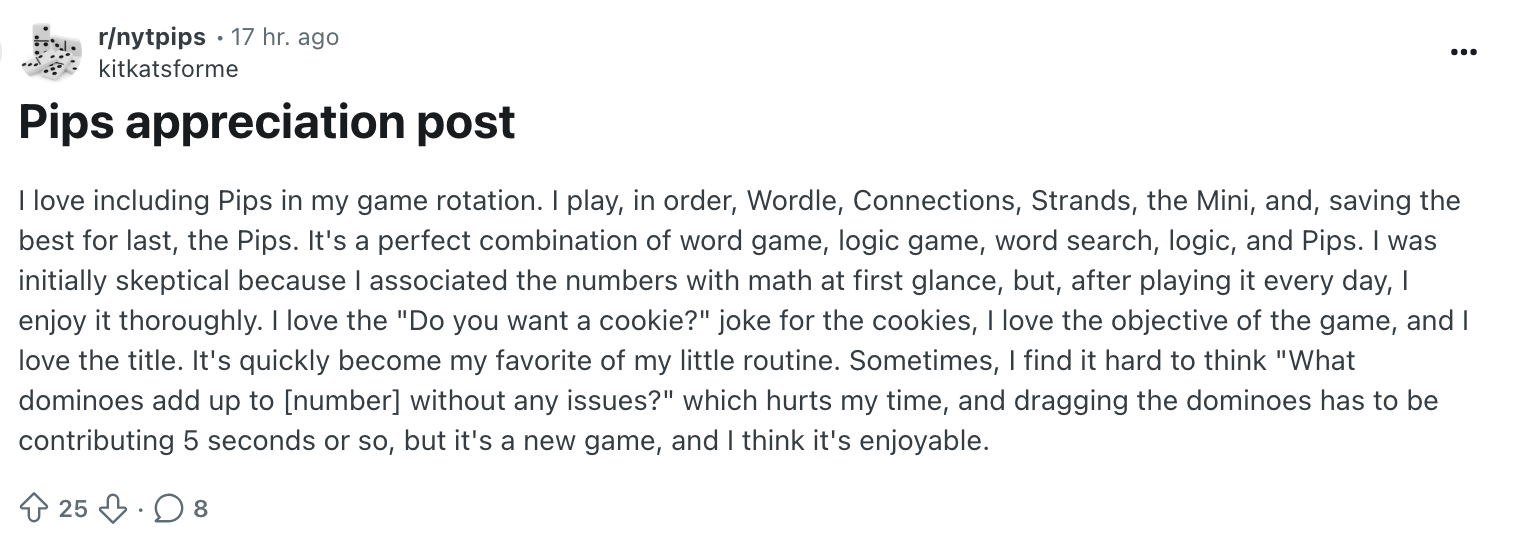Or in this New York Times piece about how Pips is made.
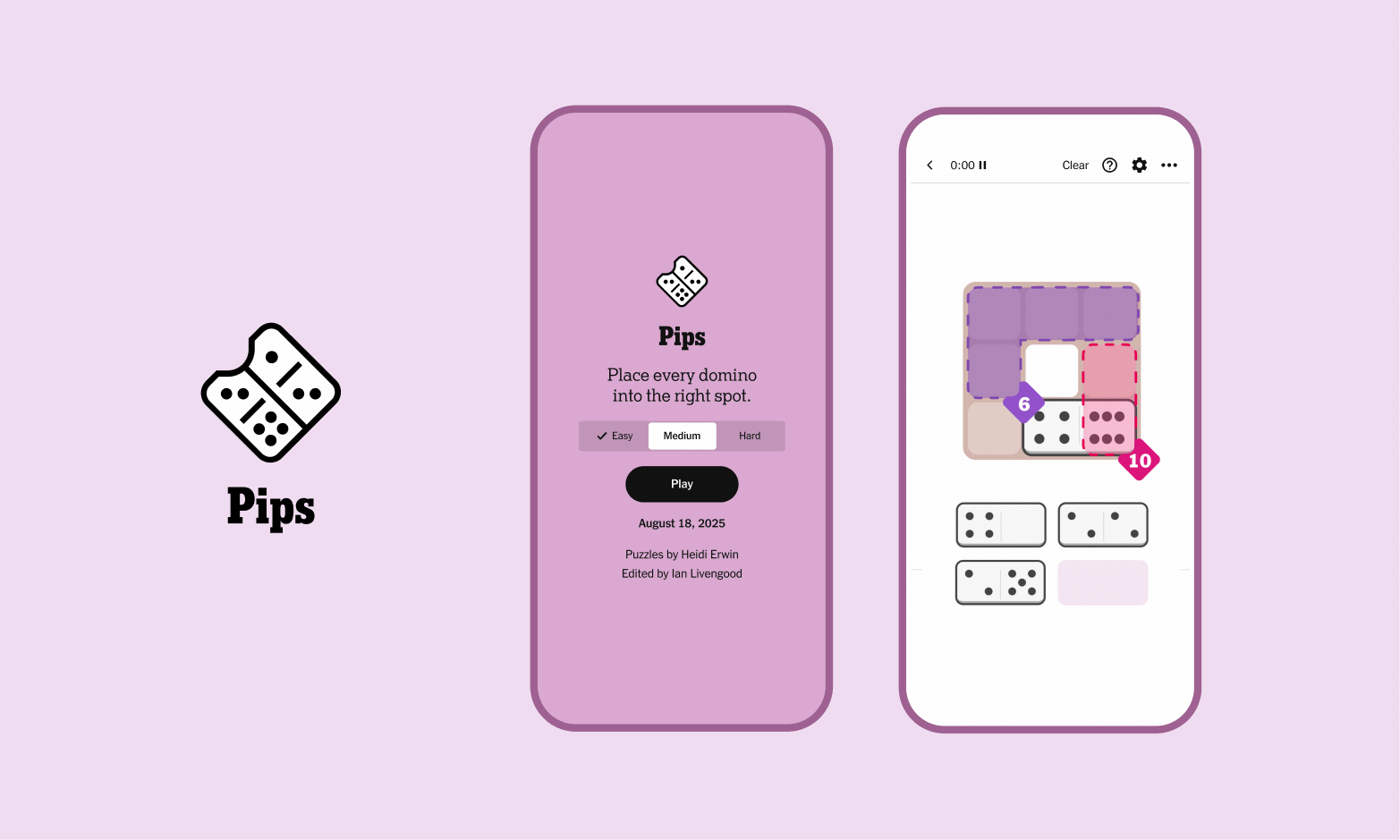

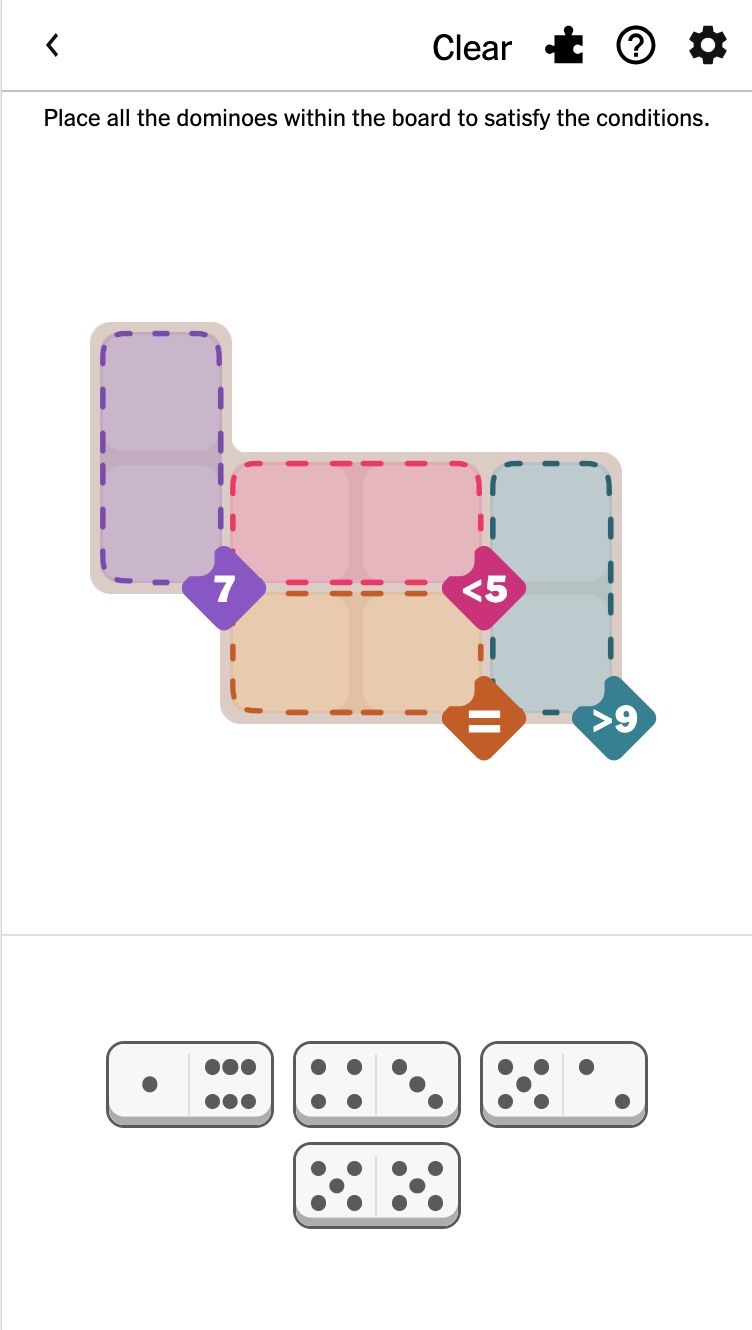
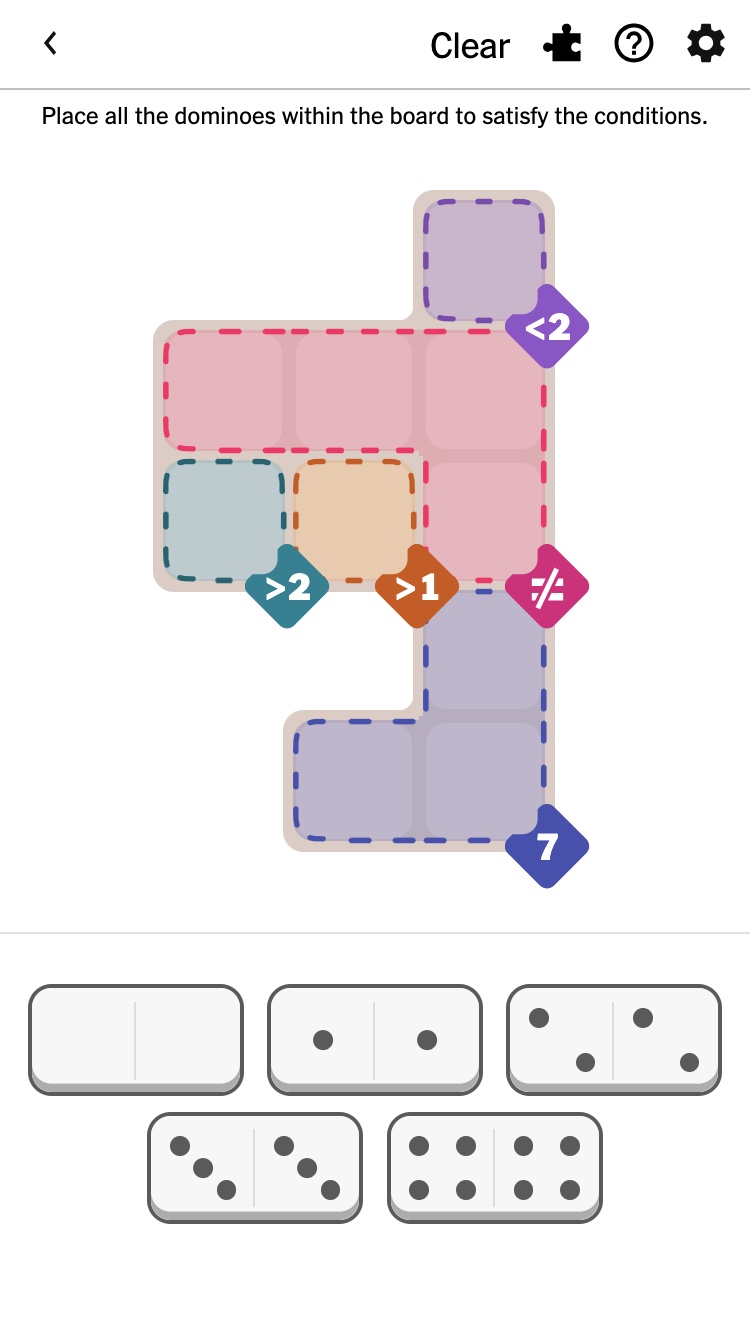
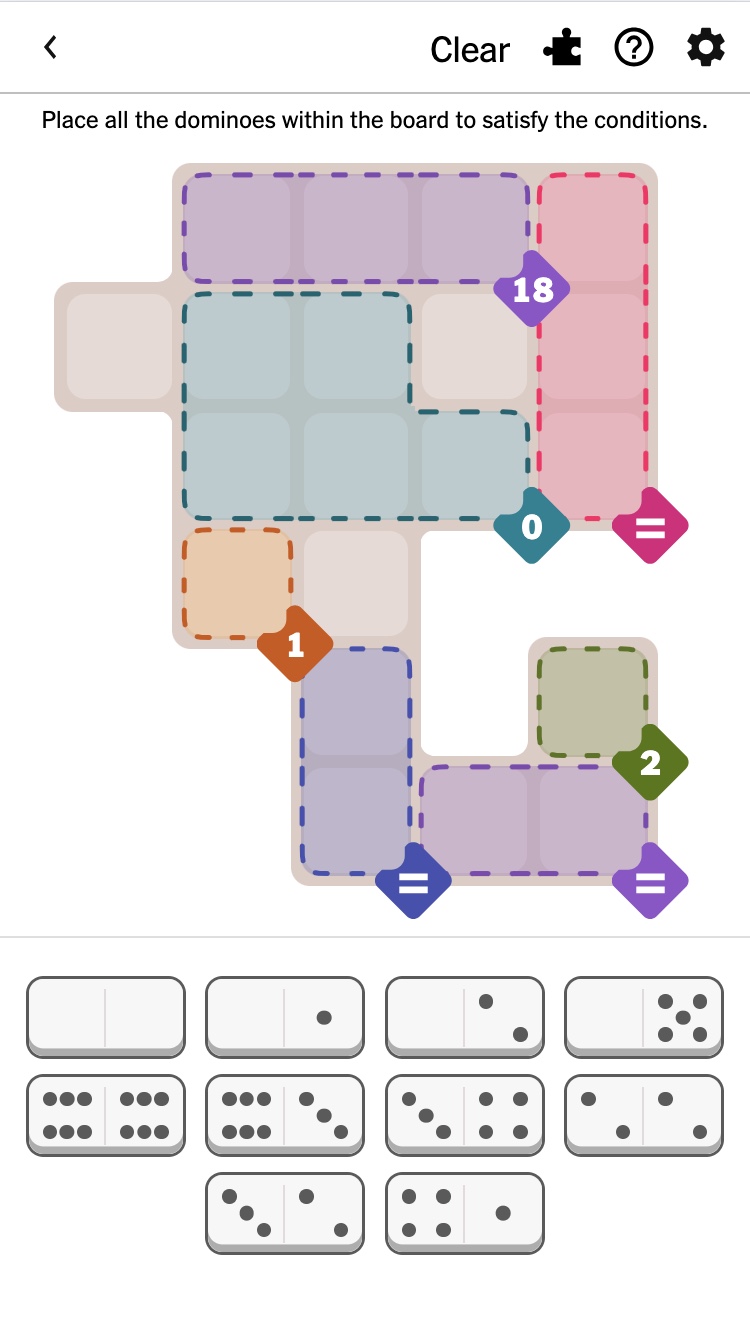

Here's a video where I talk about Pips, edited by the NYT Social team.







Here's a video where I talk about Pips, edited by the NYT Social team.
Paper prototypes from the game jams where this idea was developed:
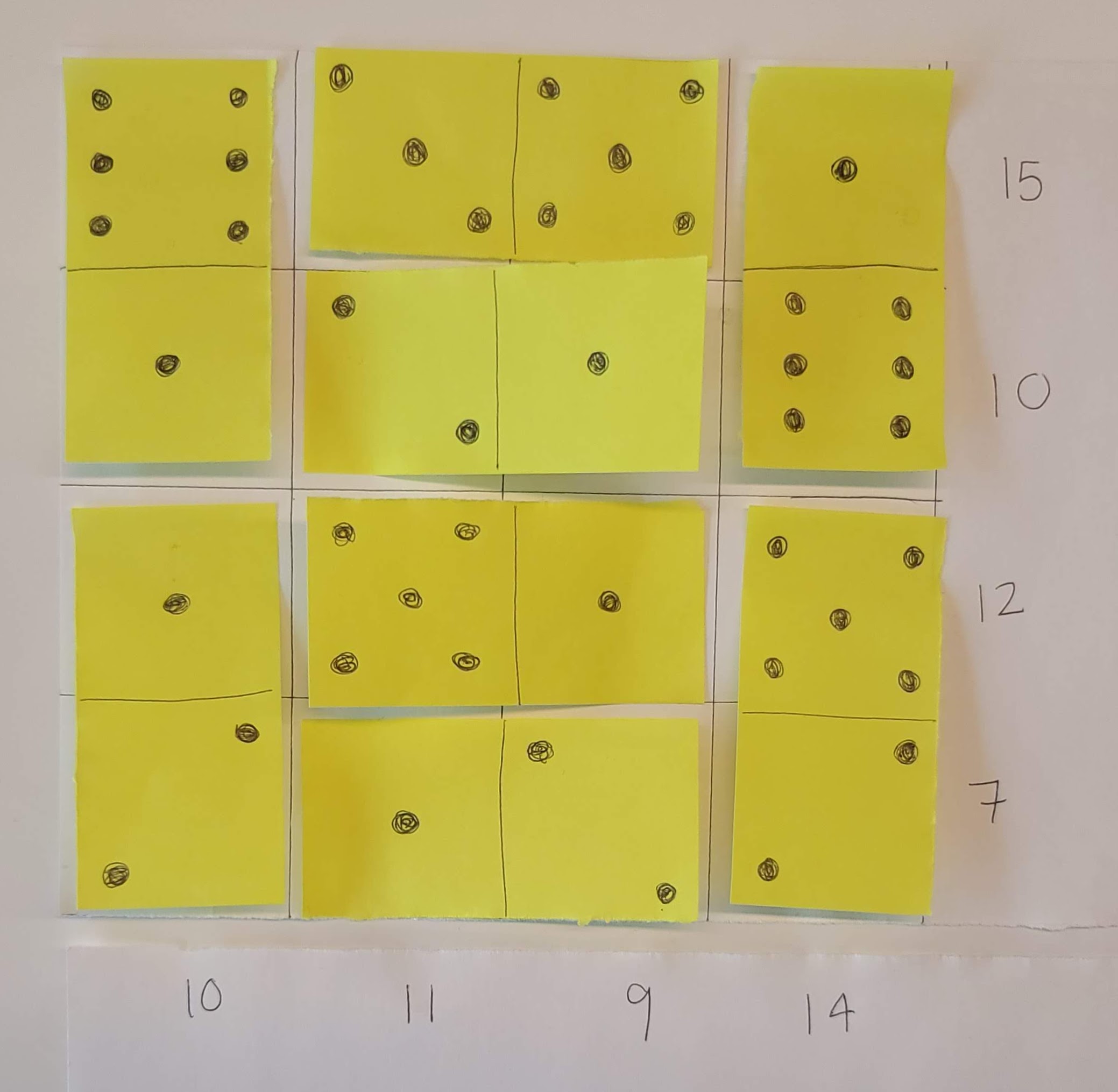
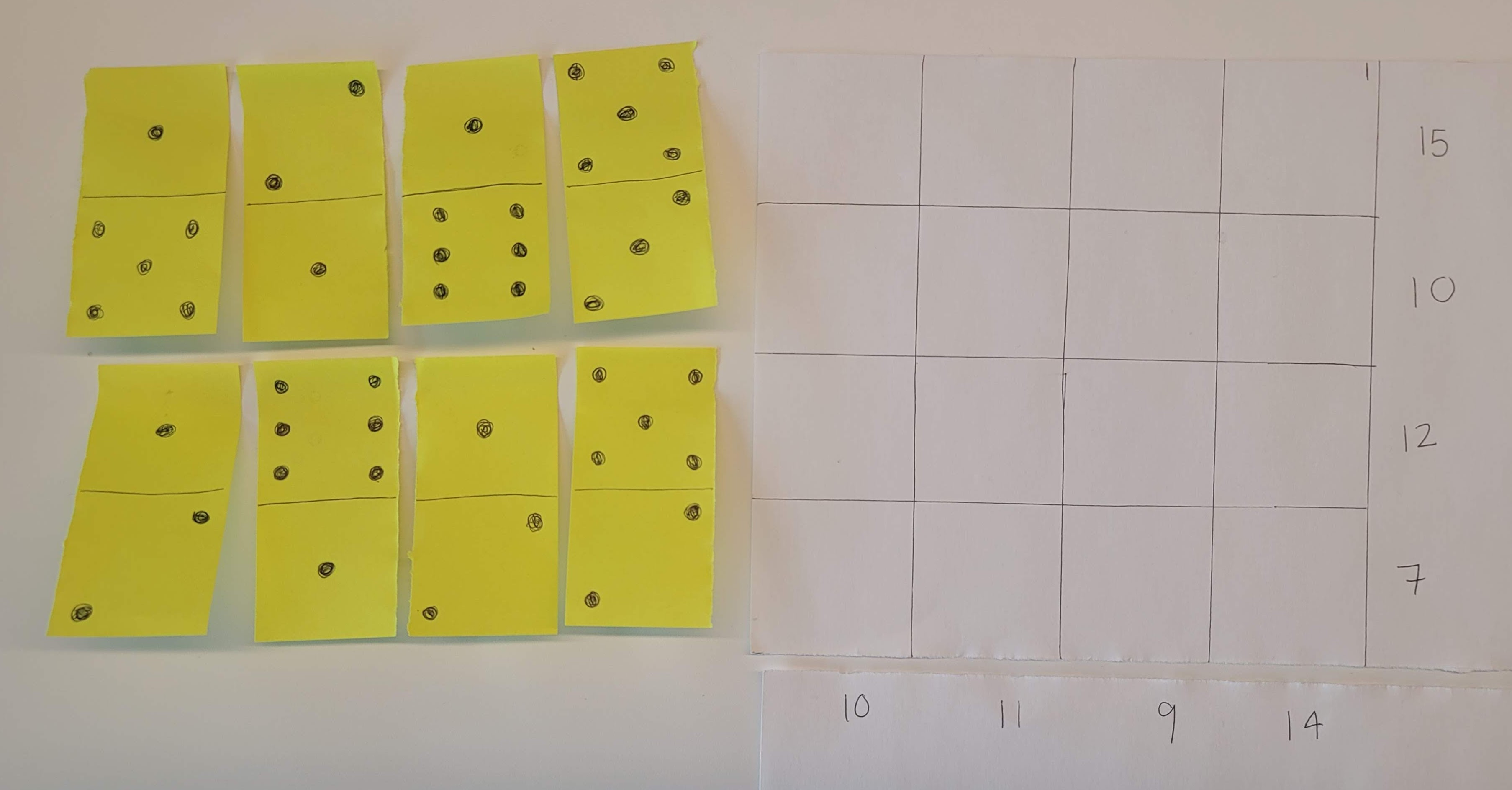

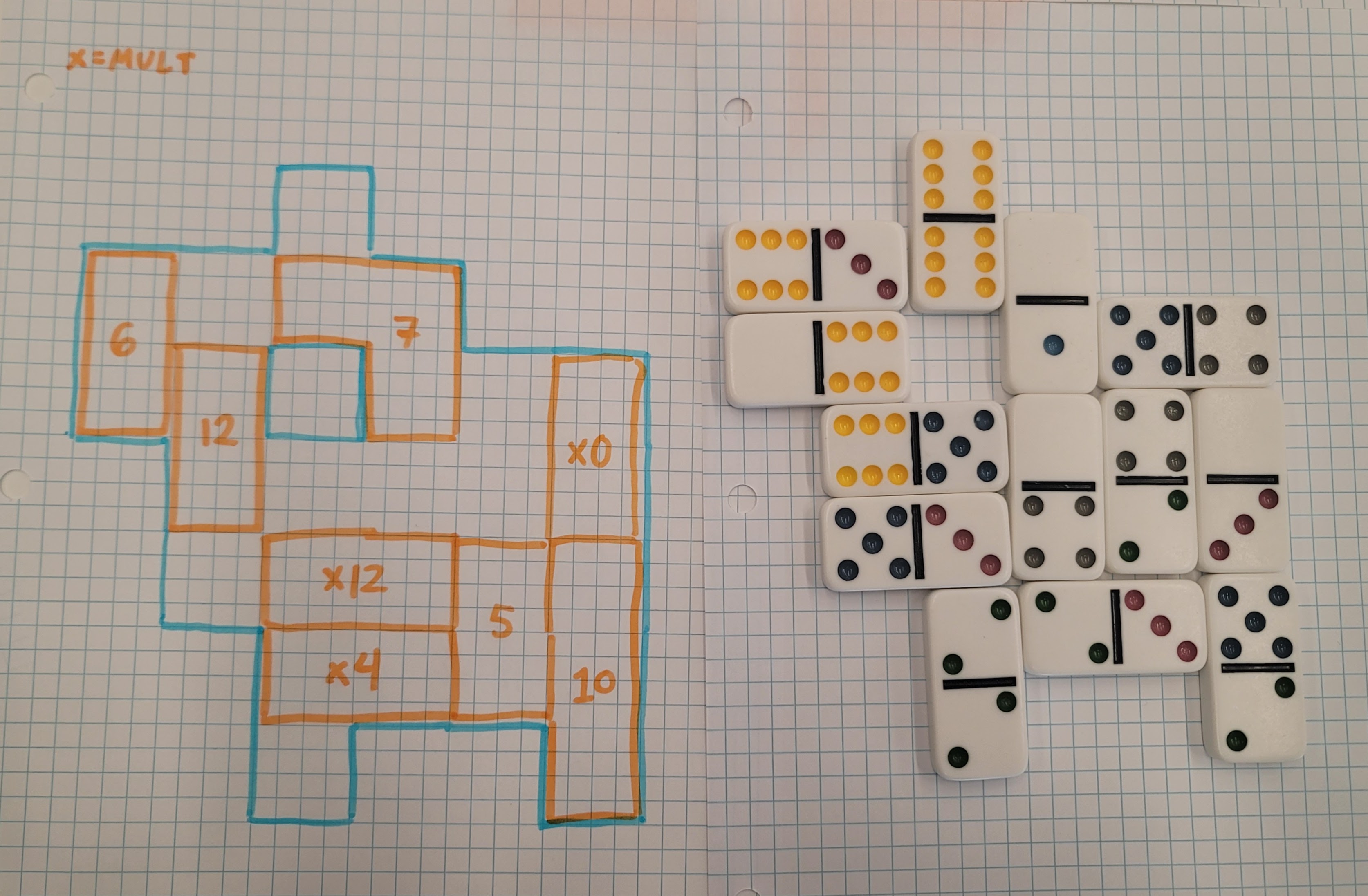
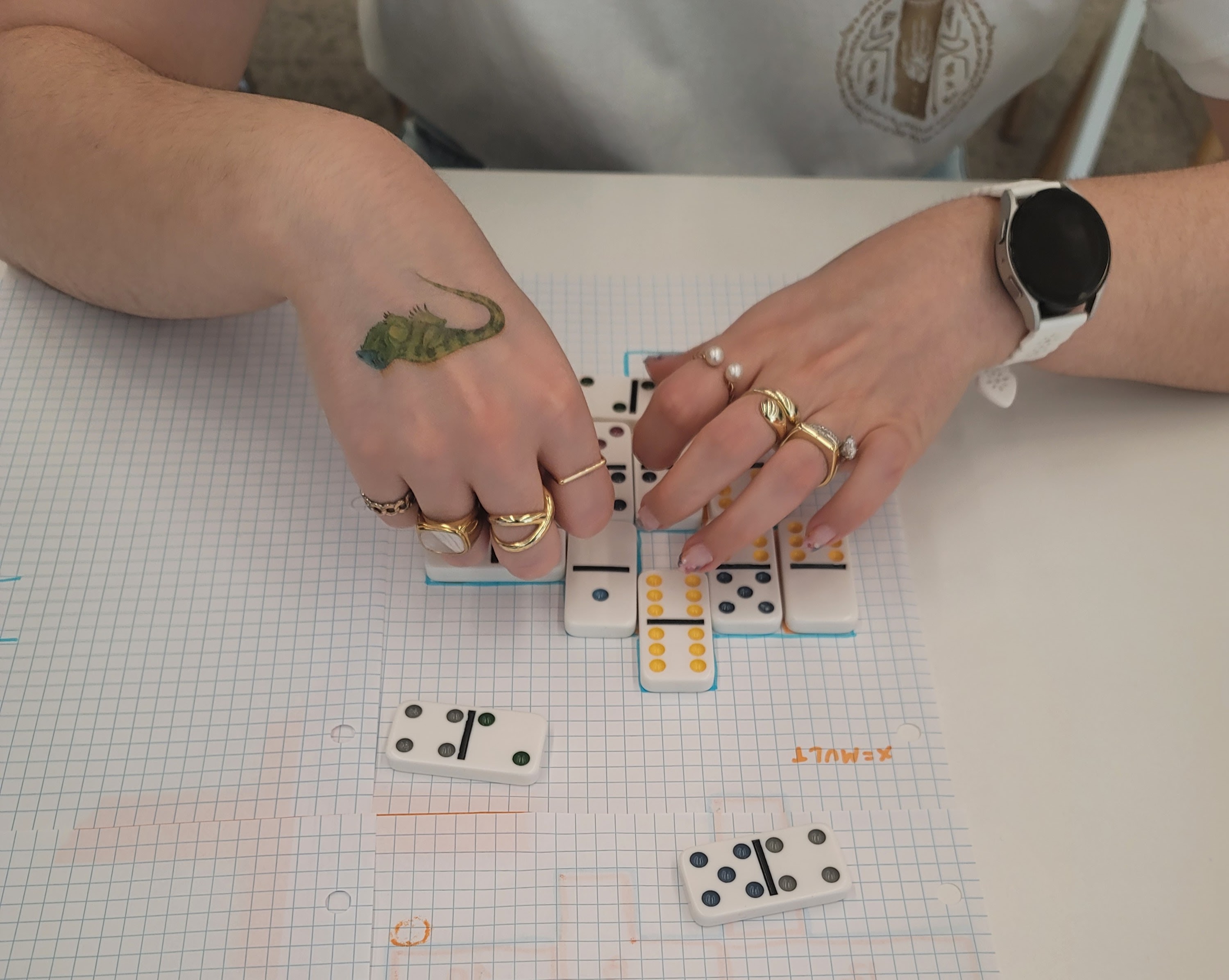
And mockups from that game jam:
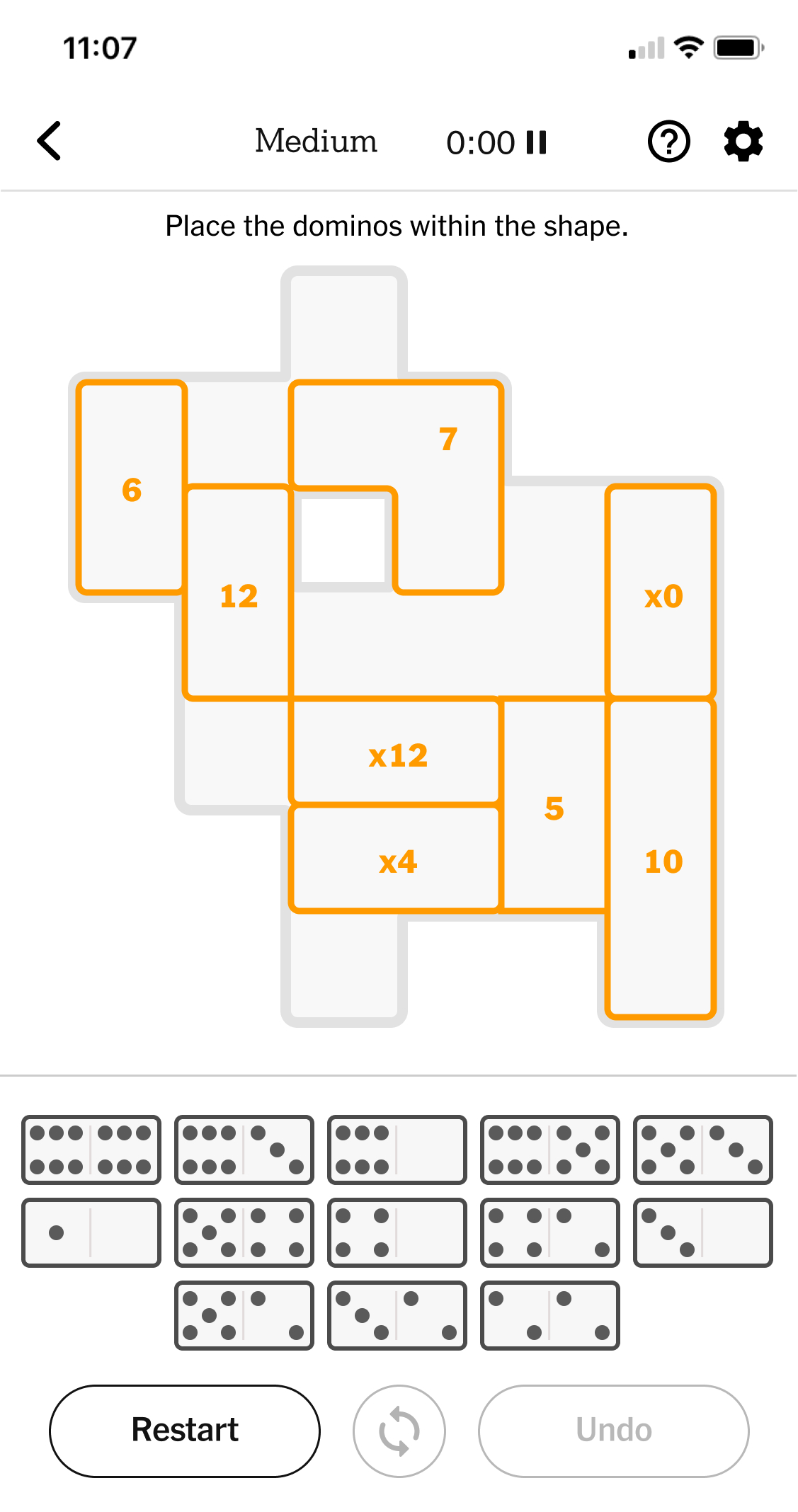
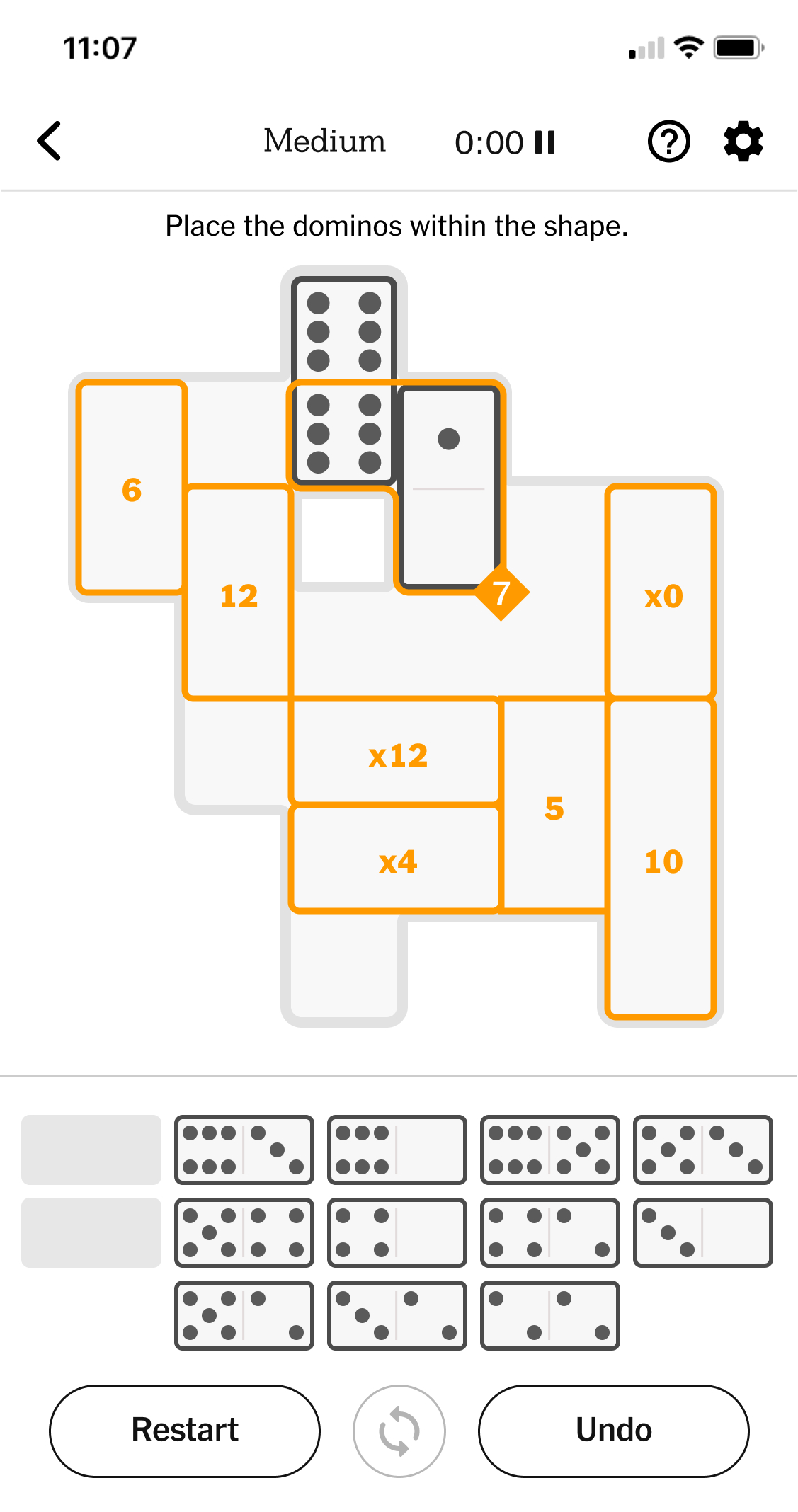
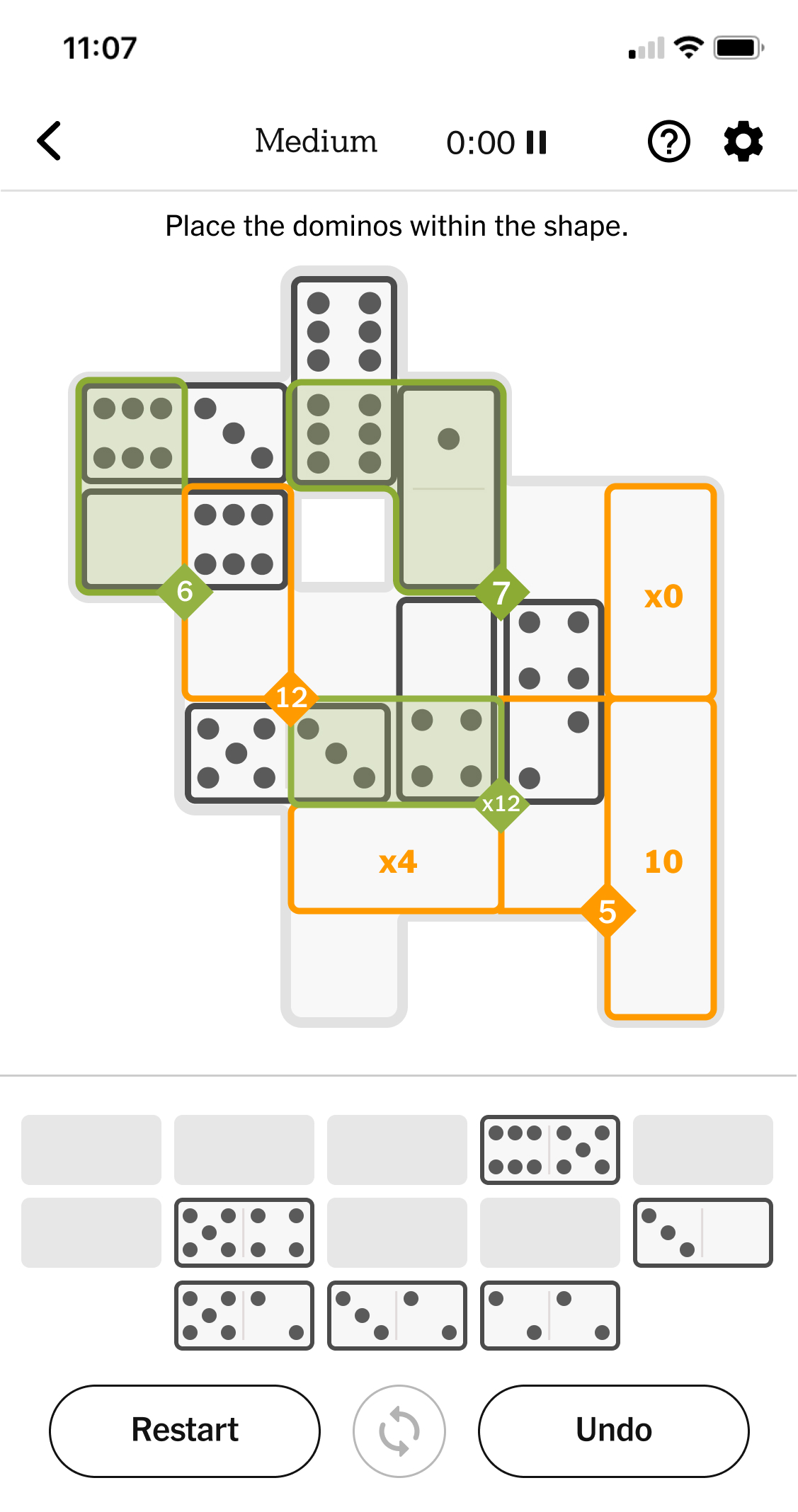
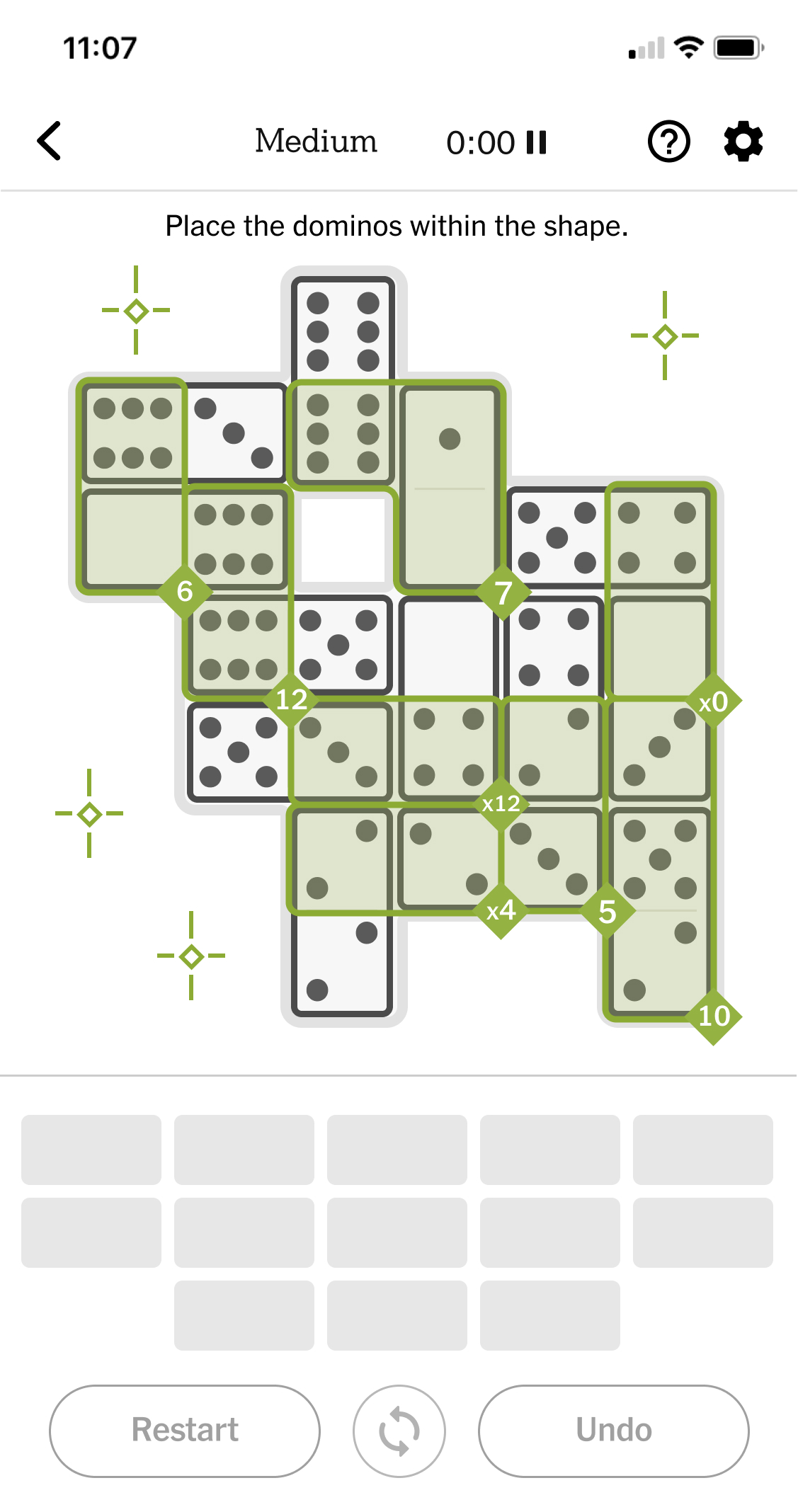
We explored a few variants of the base concept during early iteration. This included using symbols instead of numbers, a sudoku variant where each row and column could only contain unique values, and pieces that weren't 2-by-1 in size.
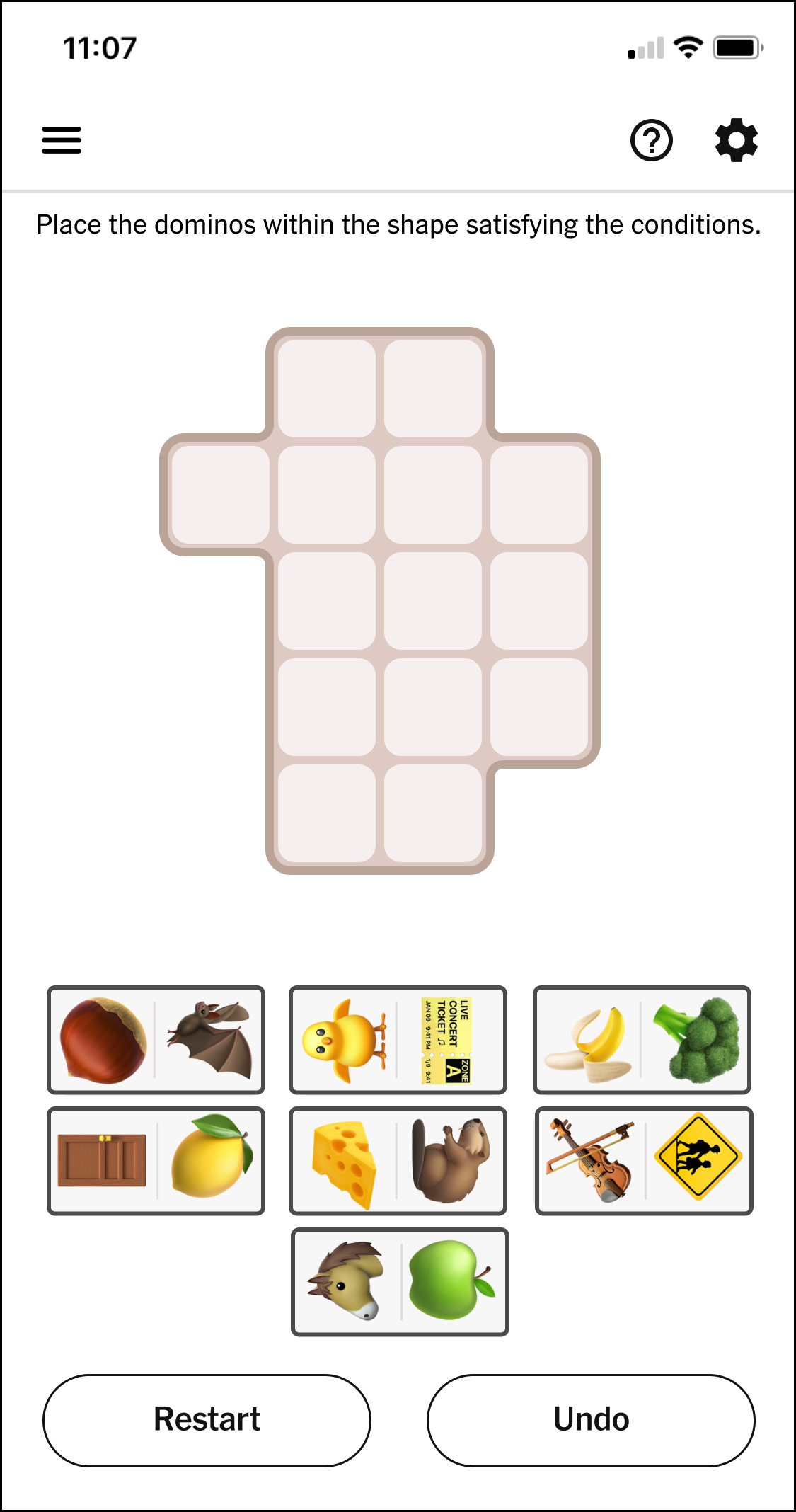
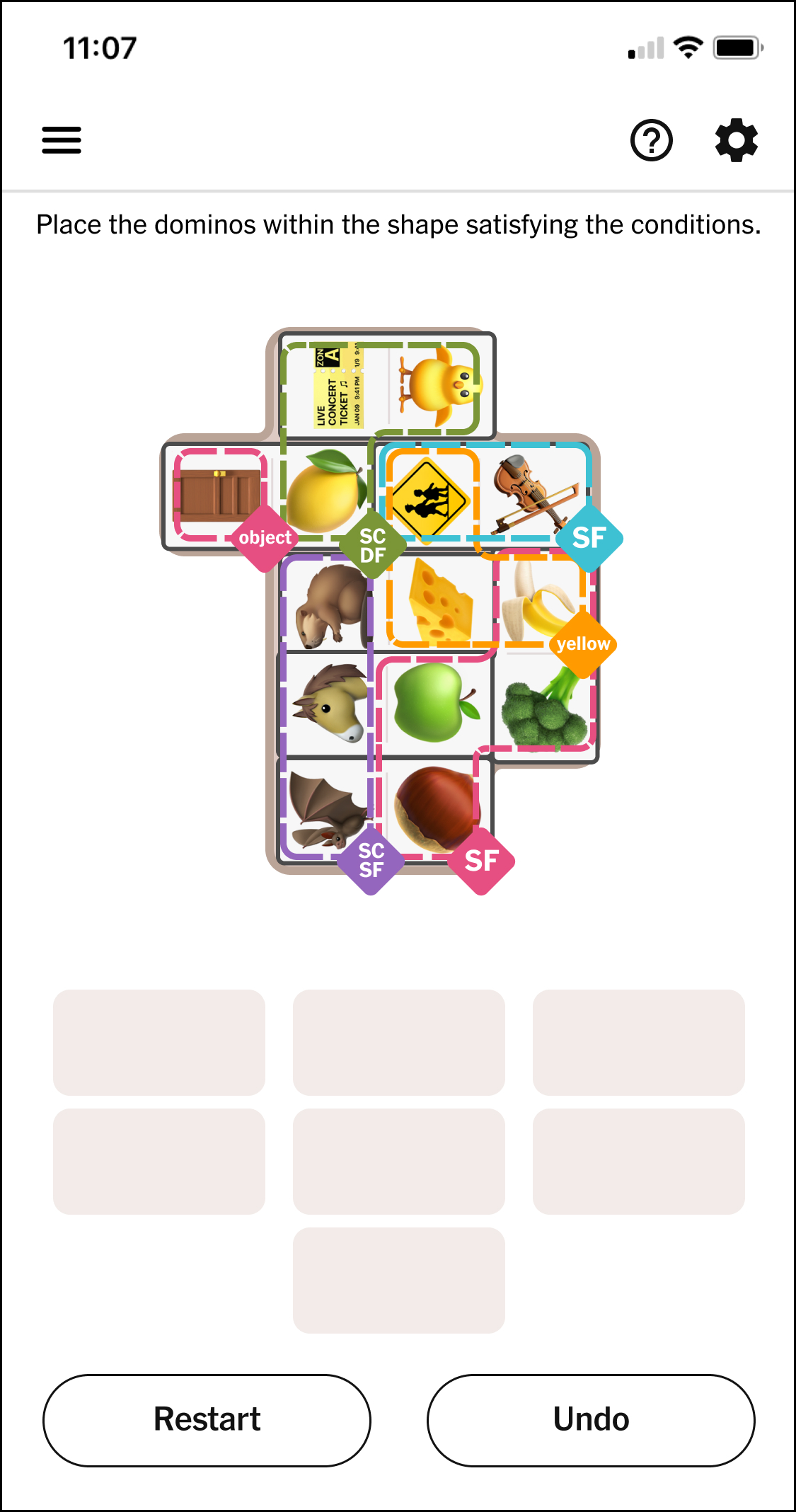
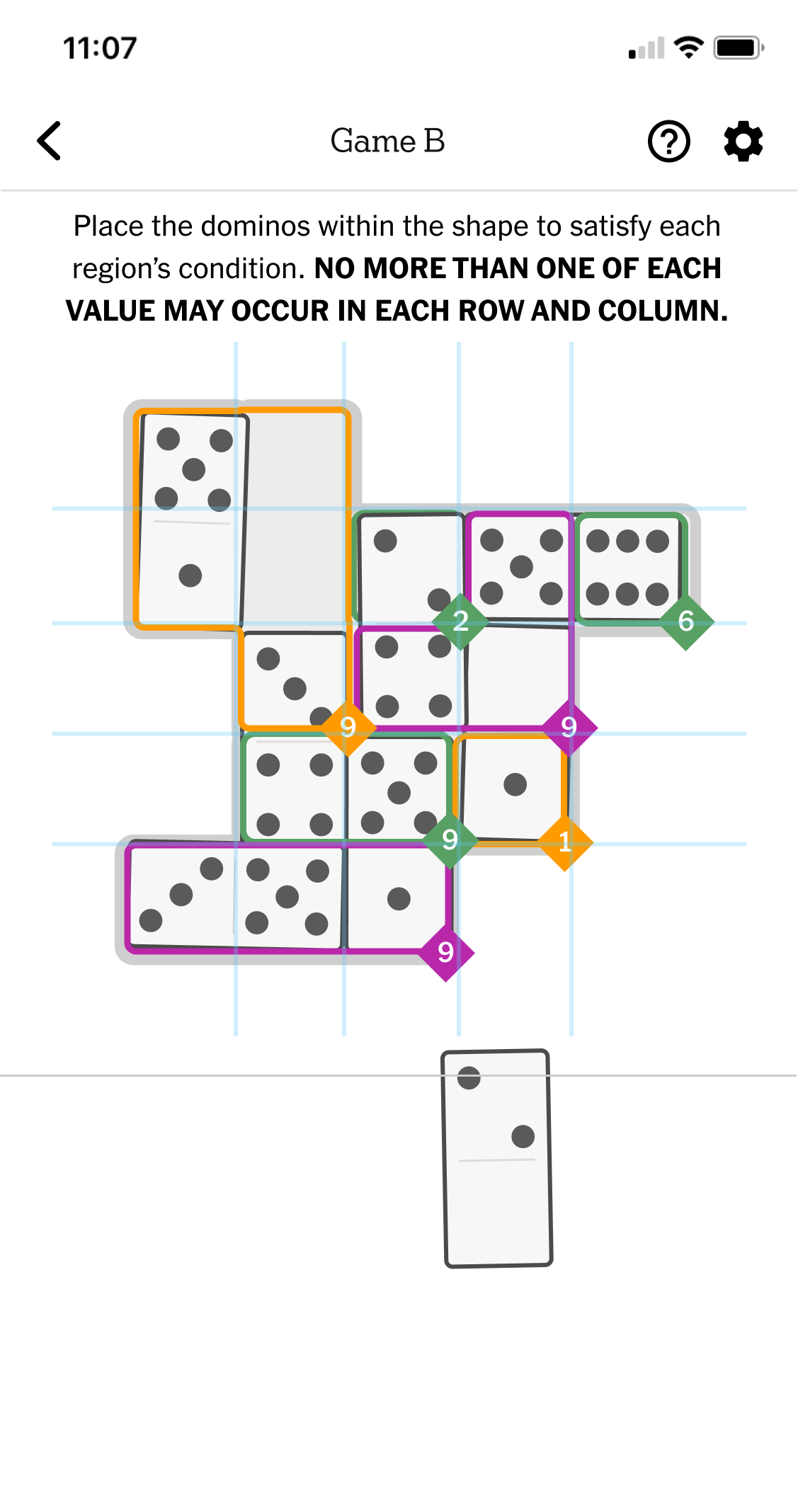
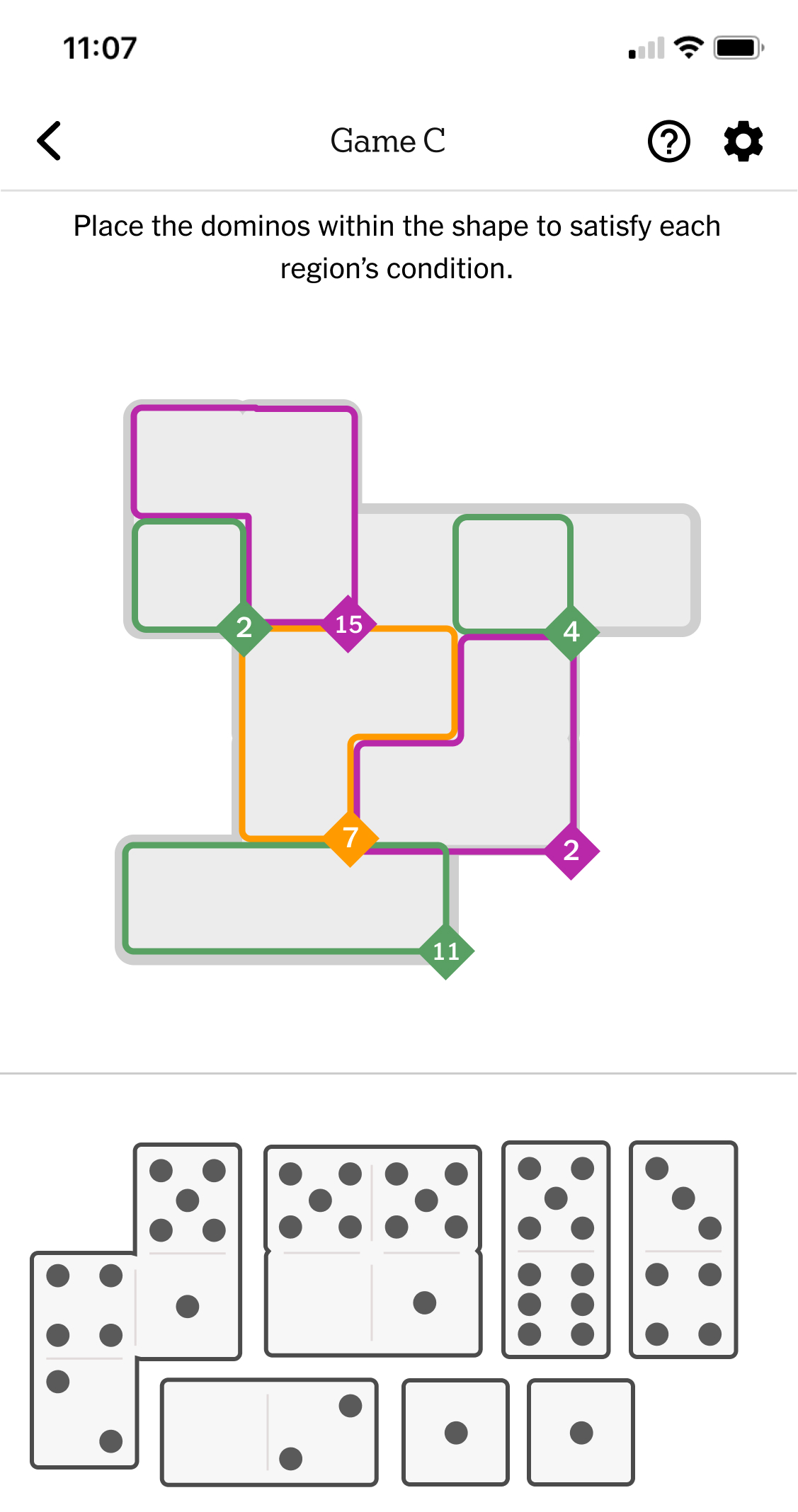

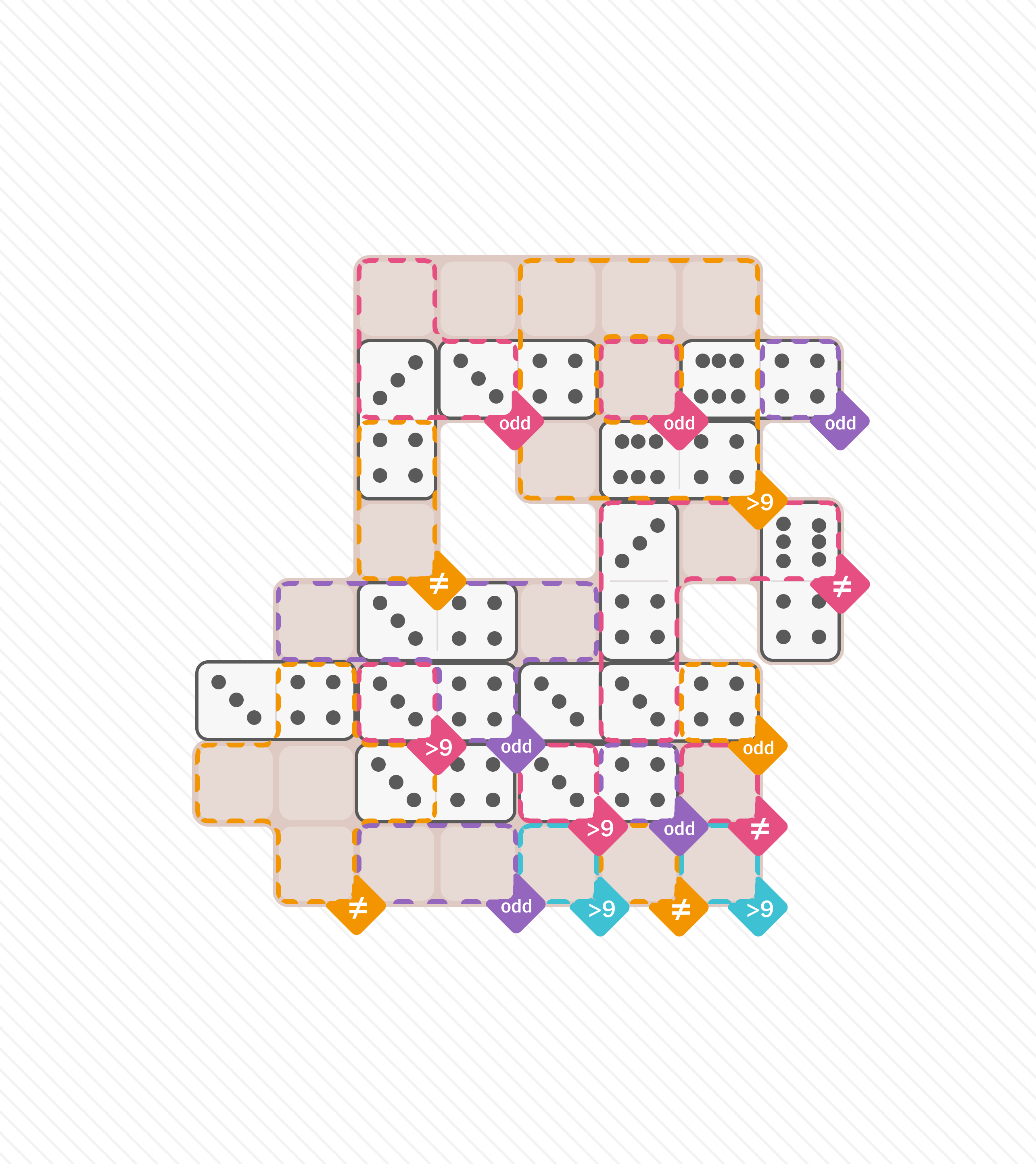
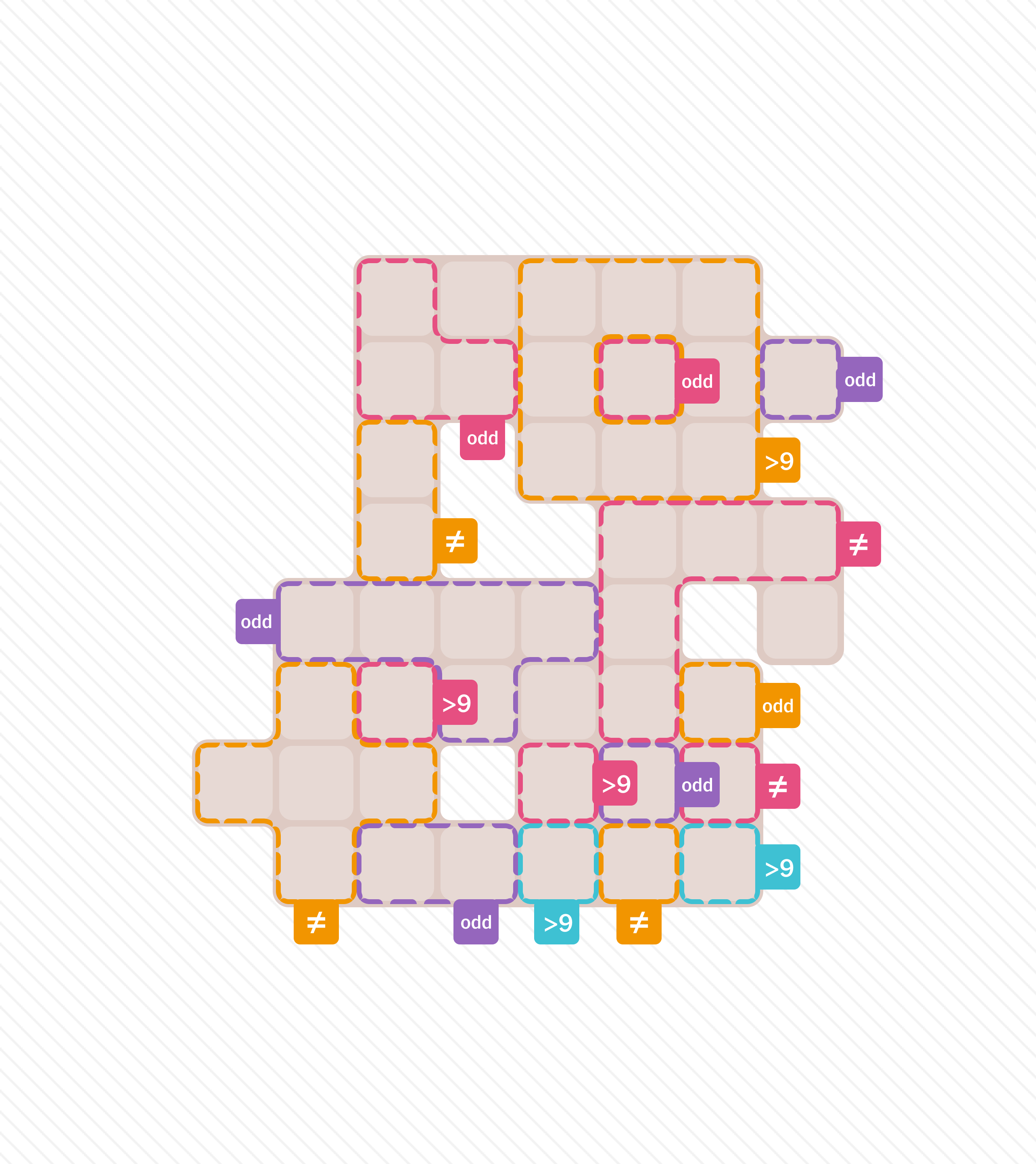
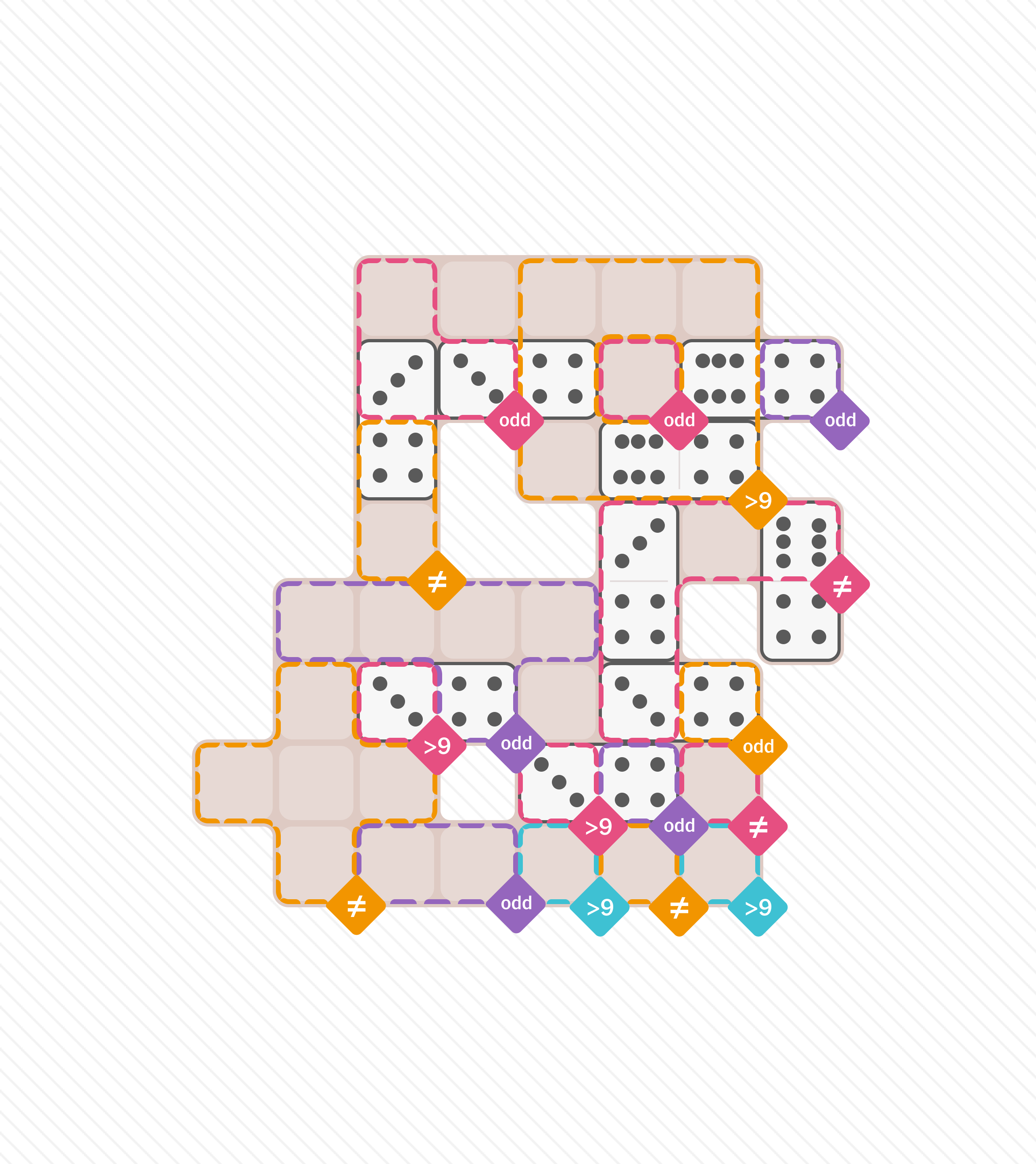

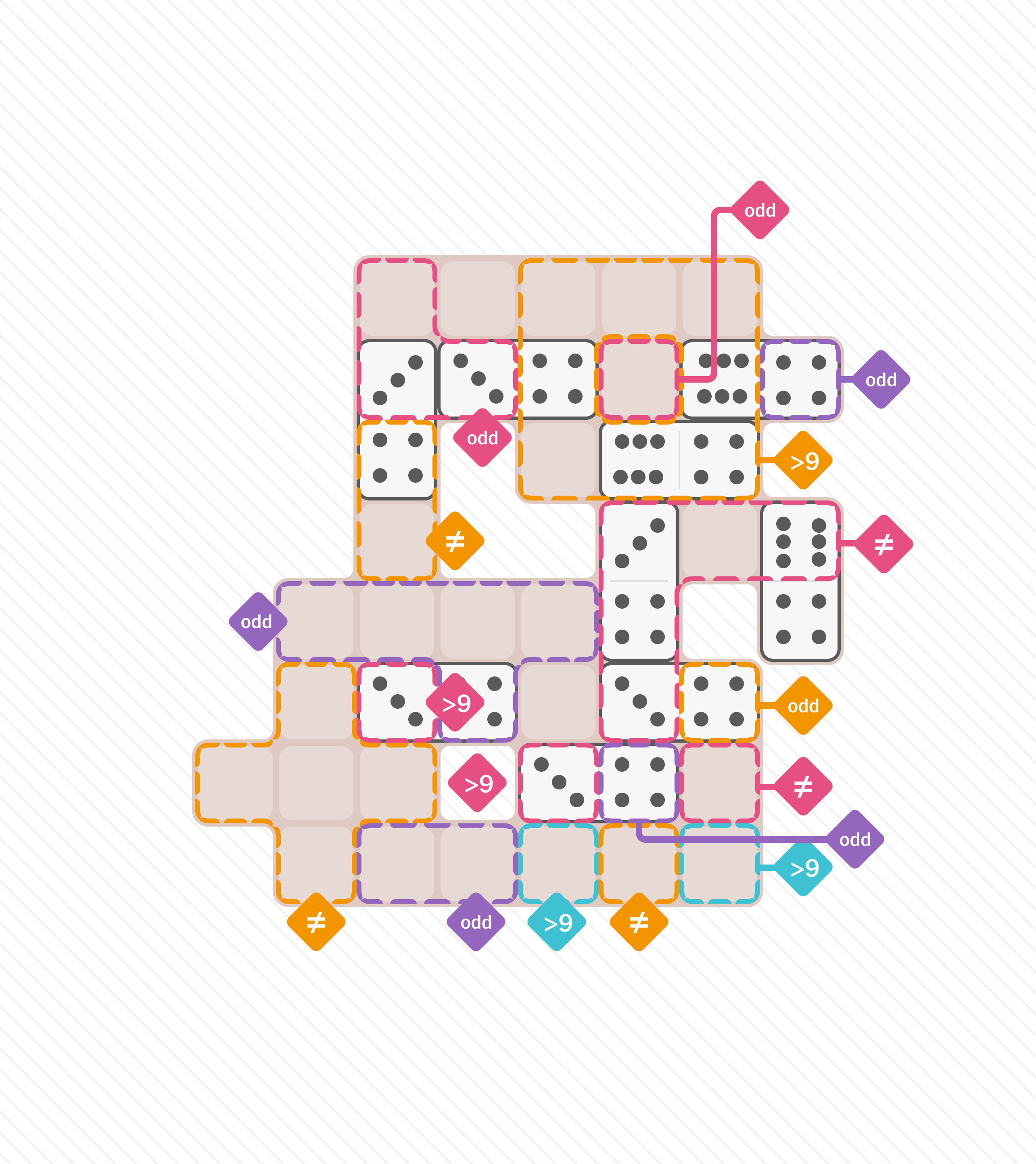

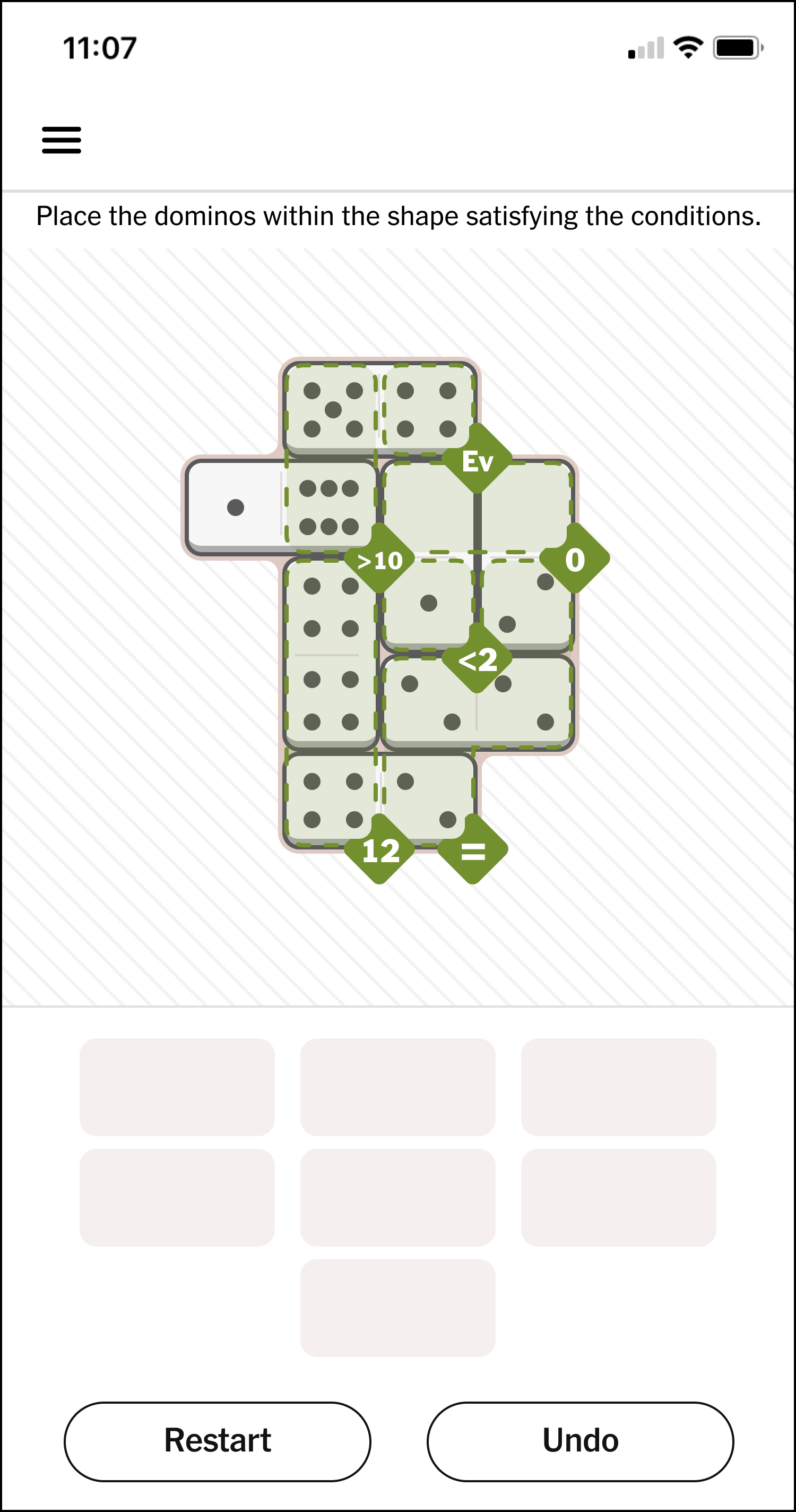


I designed Pips puzzles alongside Rodolfo Kurchan and Ian Livengood. I developed the puzzle design philosophy, guidelines for making compelling Pips puzzles.
I started by laying out puzzles on paper.
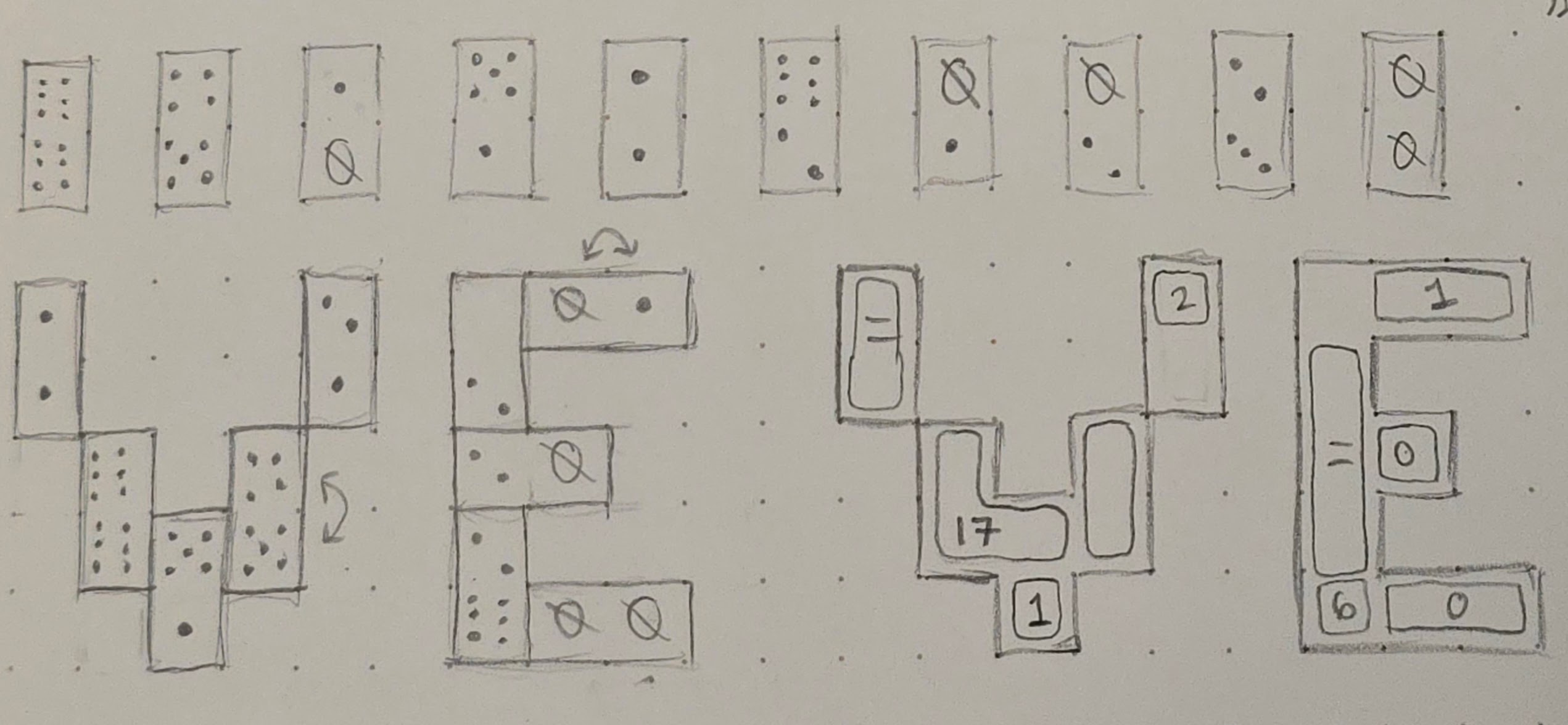
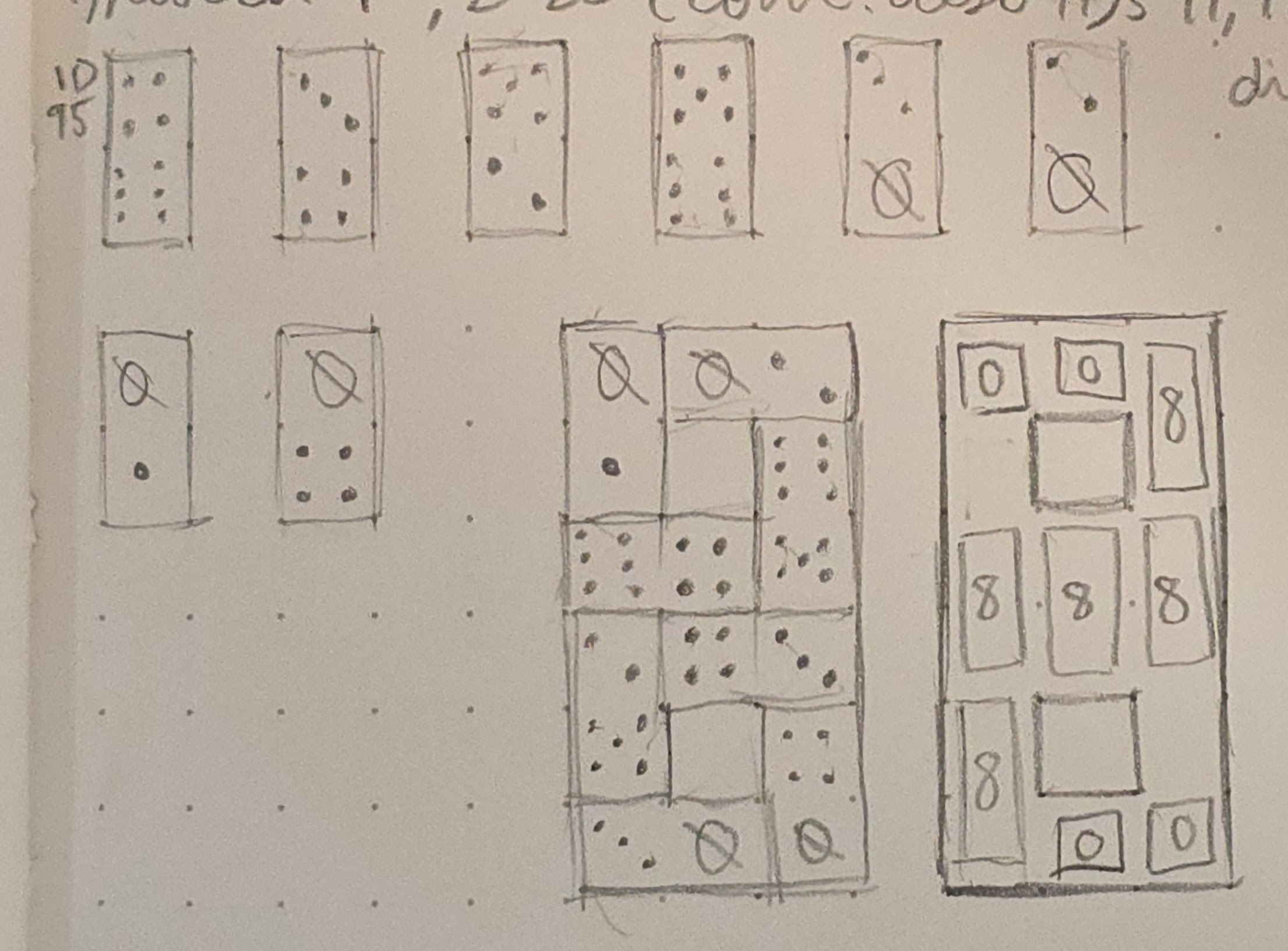
Here's a series of three Pips puzzles that ran one day with an easter egg reference to the snake that swallowed an elephant from The Little Prince.
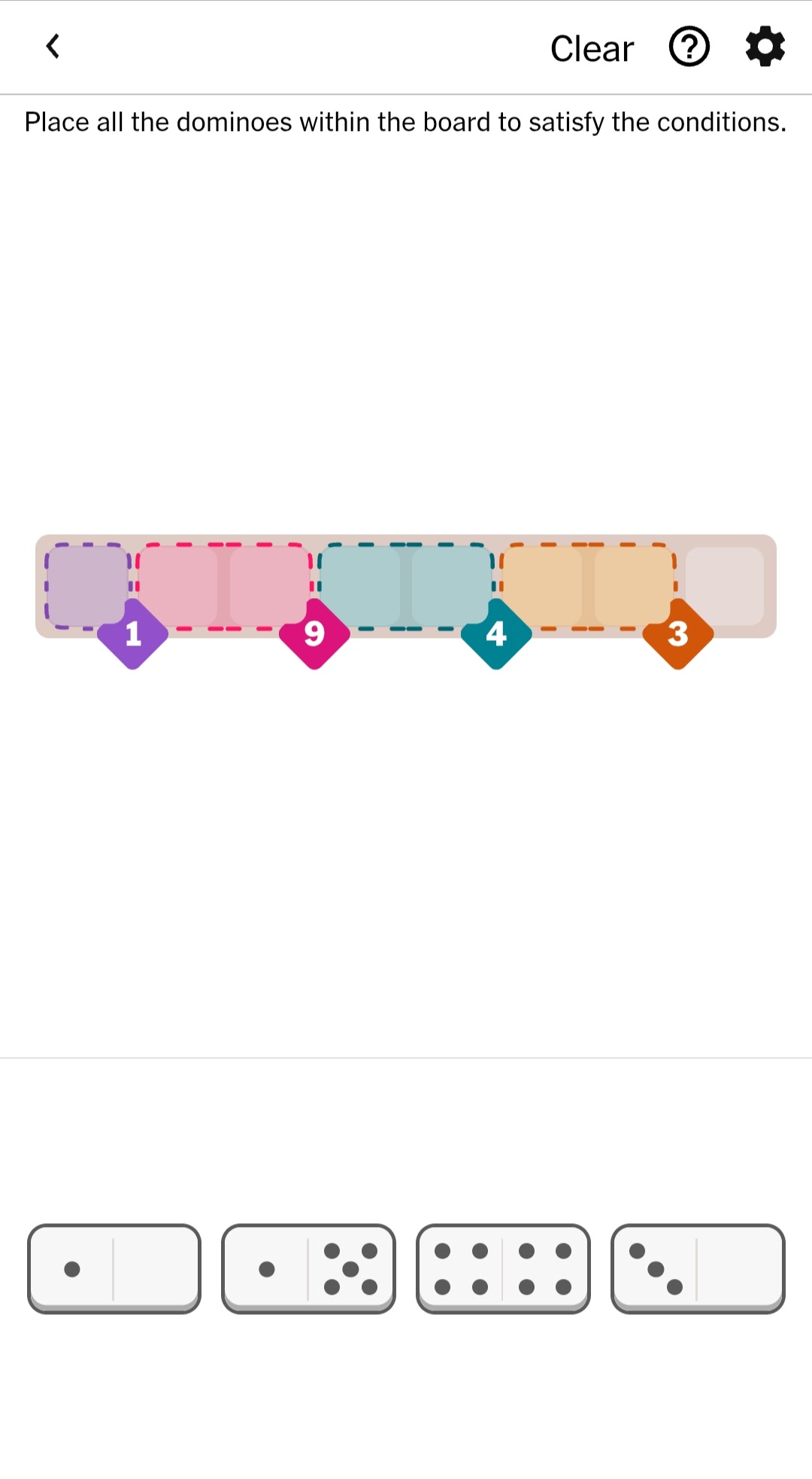
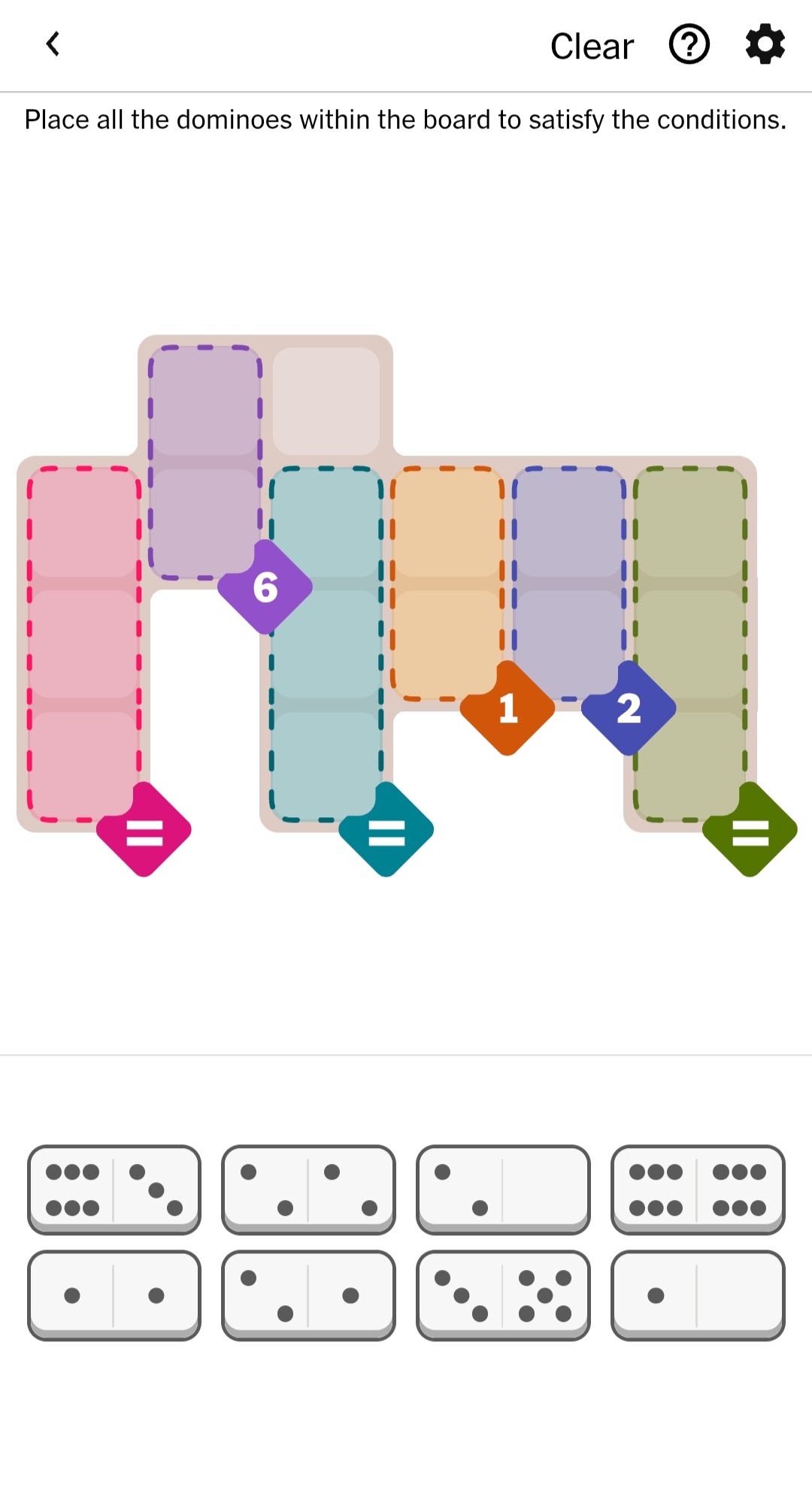
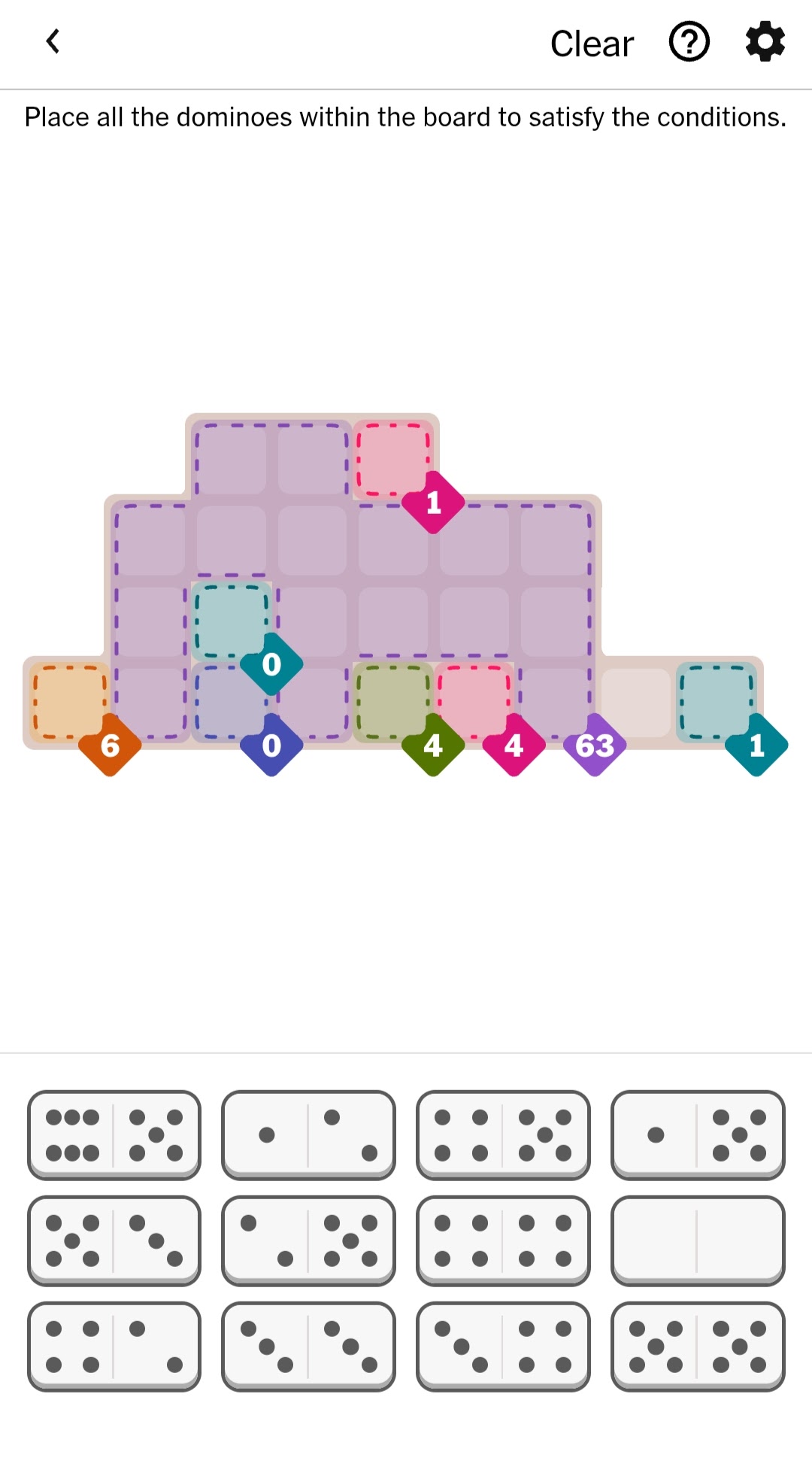
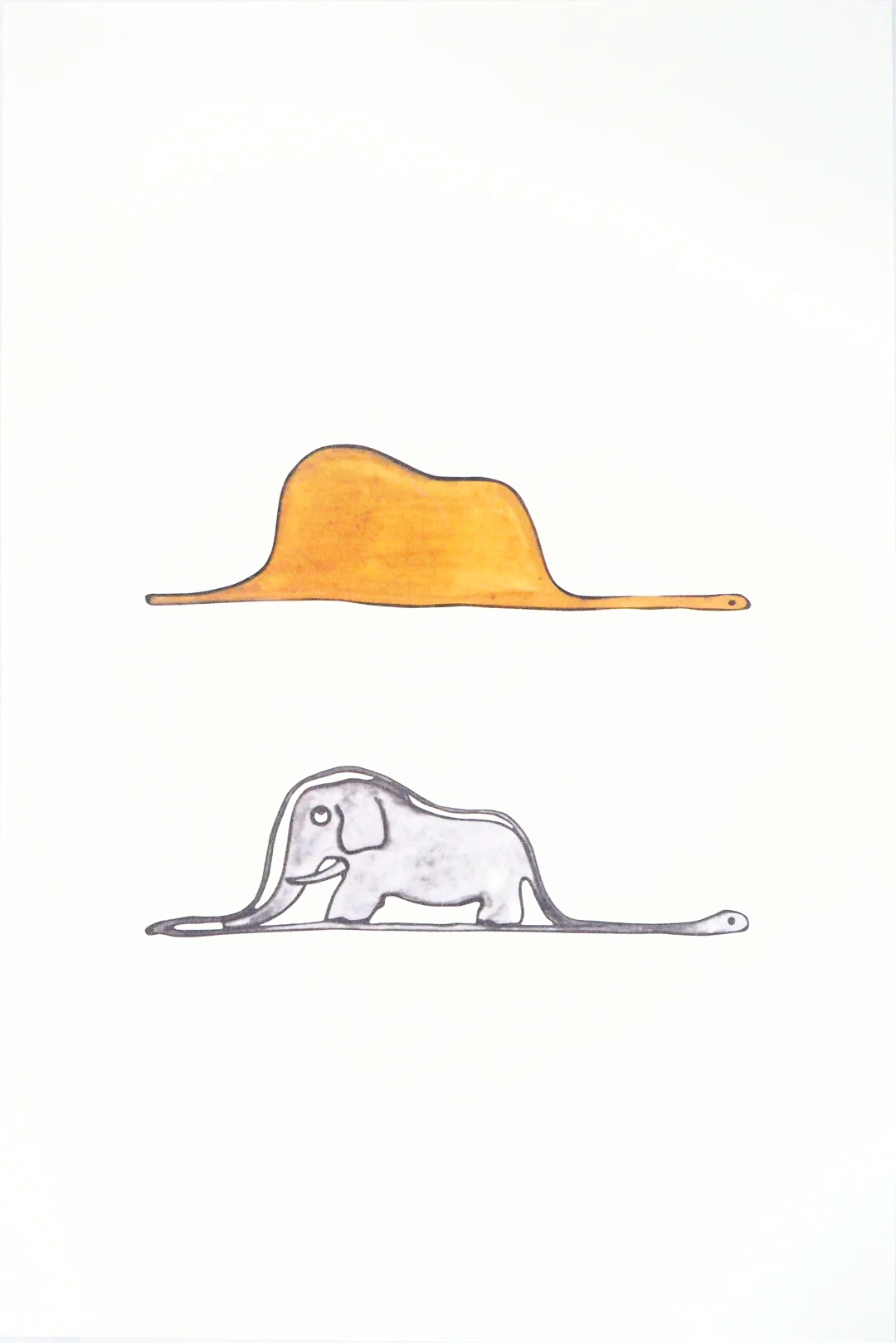
Here's a puzzle set that spelled out LOVE across the easy, medium, and hard puzzles:
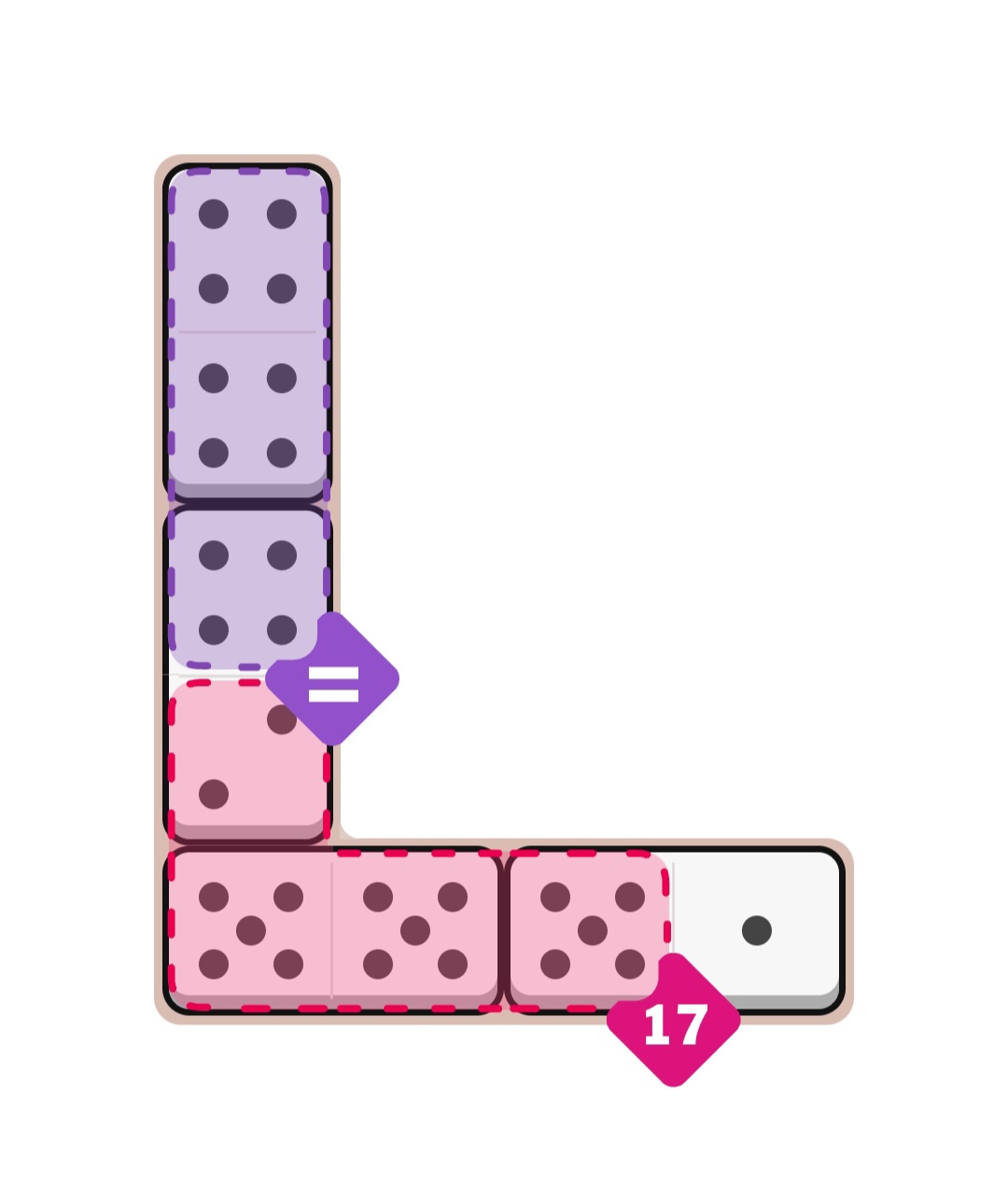

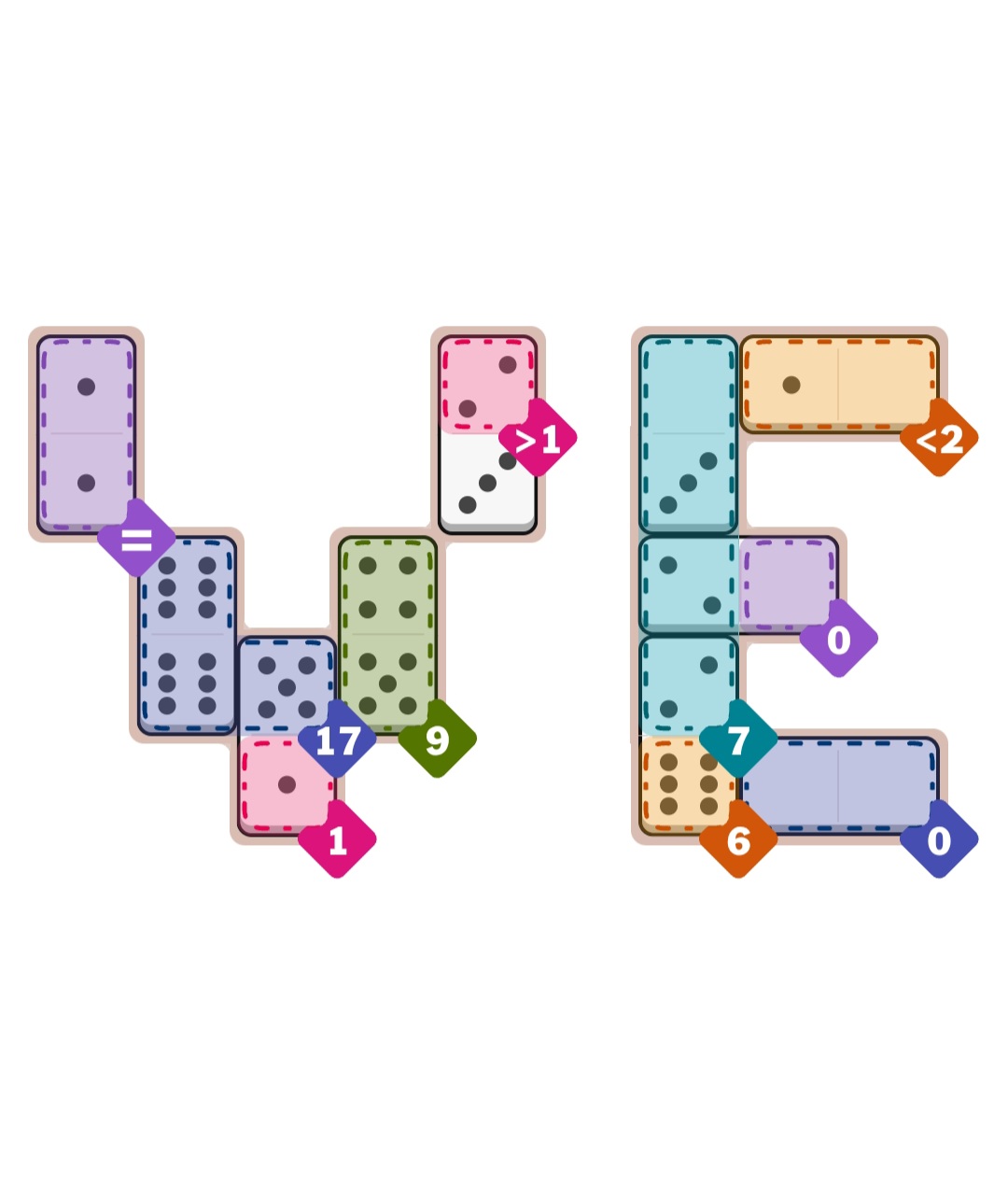
Positive. Take my word for it lol.
Here's one moment of Pips appreciation from Reddit:
